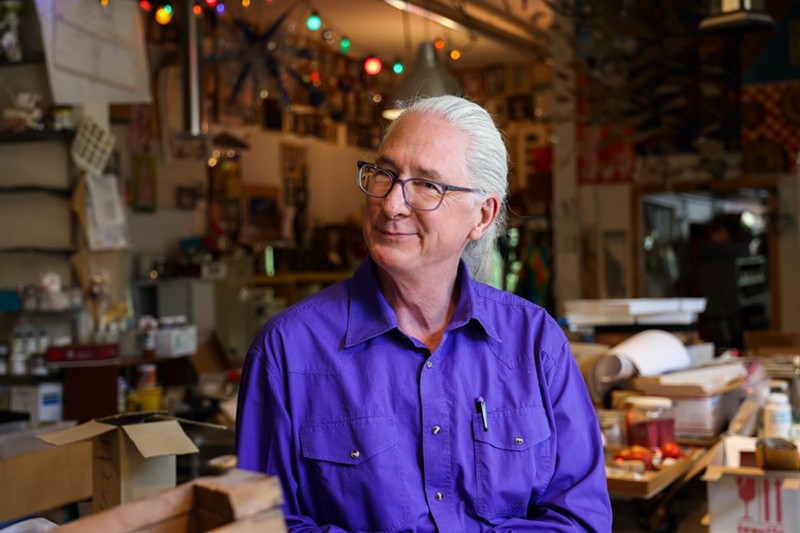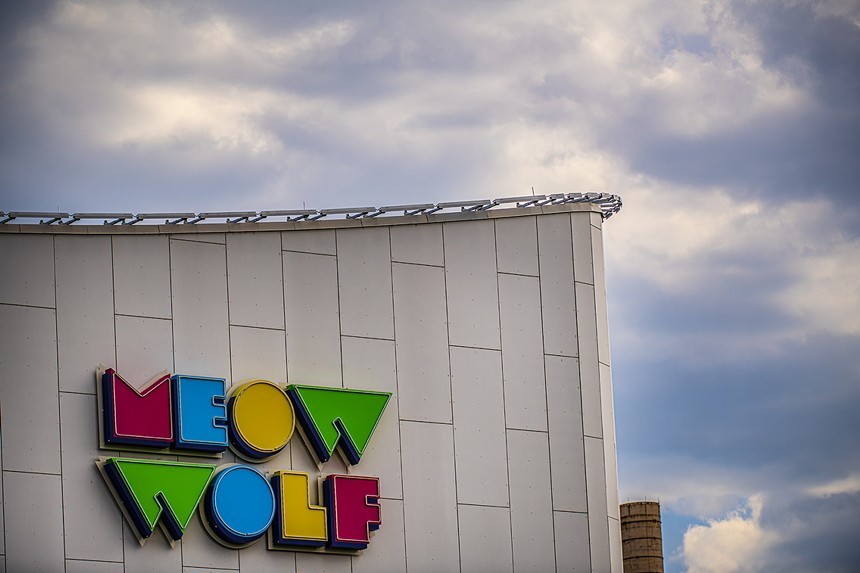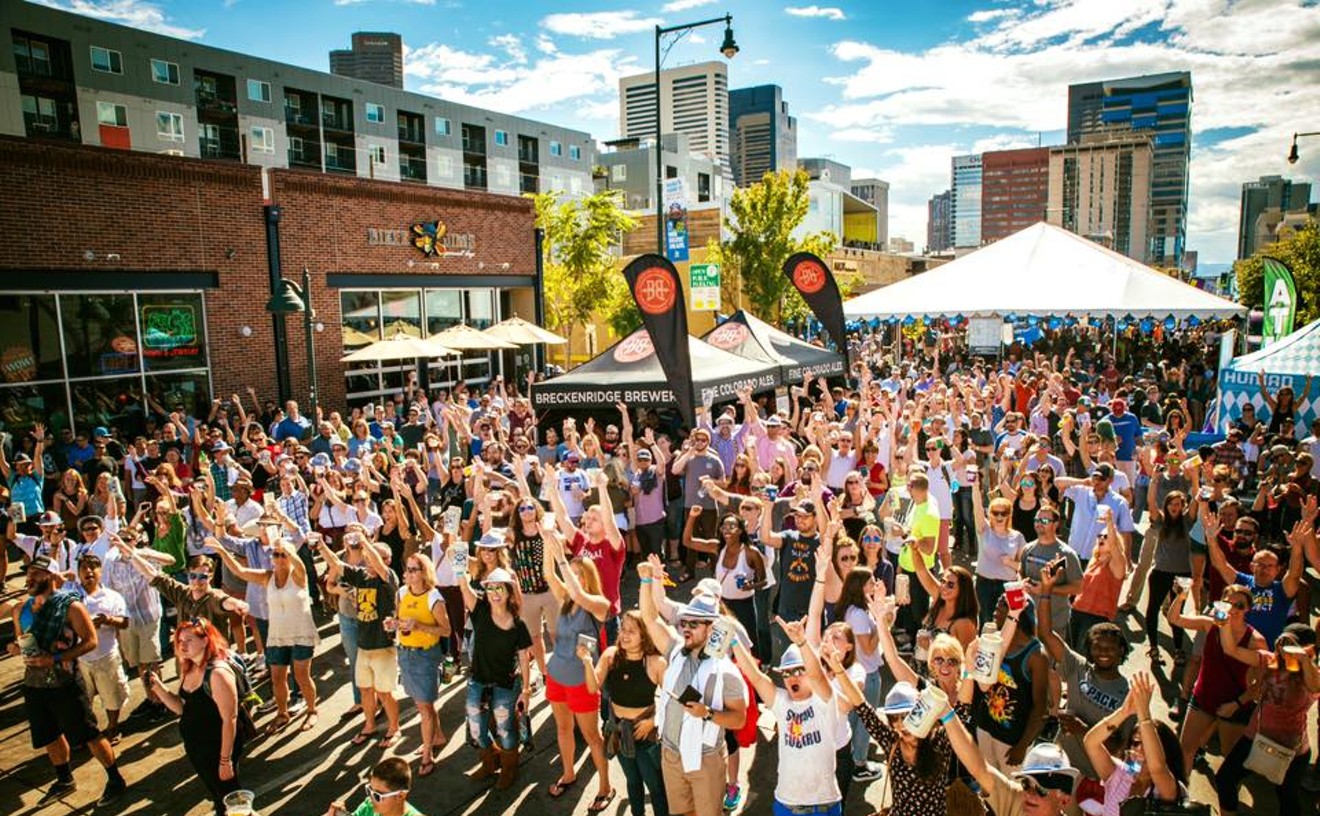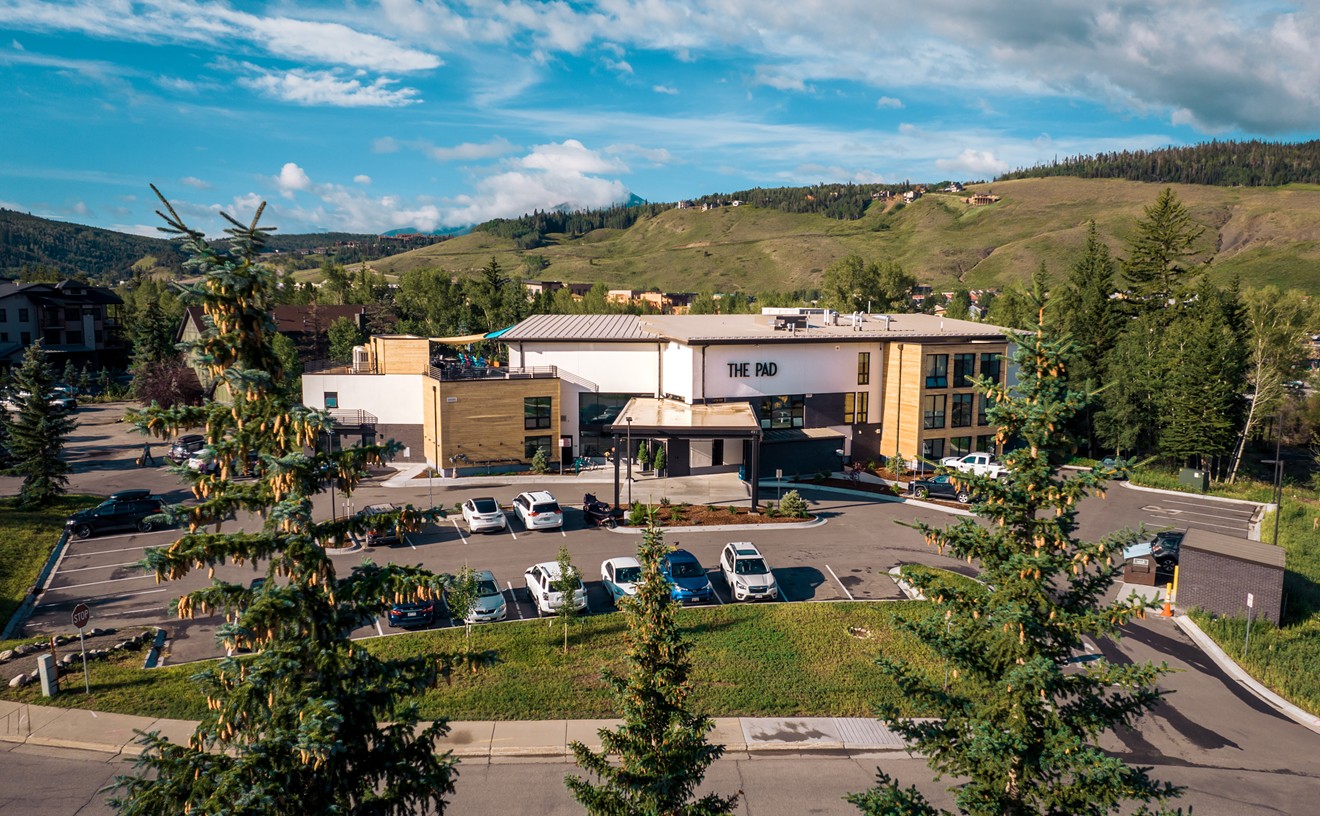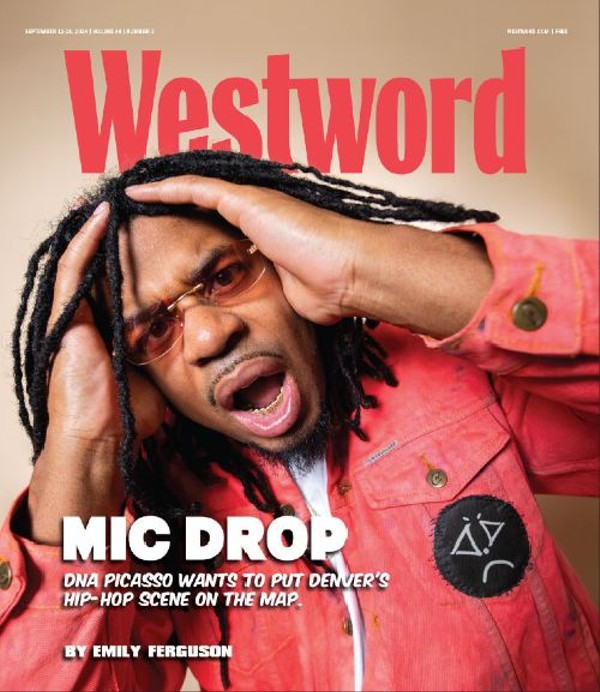Colorado native Hanzon began his creative career as a magician, dancer and singer who started out delivering singing telegrams. He soon moved on to costume, product and set design before receiving his first major commission for window displays. His breakthrough occurred in Omaha in 1987, when his "12/25: A Holiday Store" experiment became the first retail display to charge admission. From there, his career took off, and he worked on public art, immersive entertainment and visual merchandising projects in the United States and around the world. But he didn't consider himself an "immersive artist" until recently.
"I stumbled into immersive environments by mistake in the mid-1980s,” Hanzon reflects. “I sort of had a big hit, but nobody knew what it was called, so it happened and it went away. In the 1990s, I worked in the theme park industry, hoping to make some of my ideas for art happen. The most recent period of immersive started in the 2010s. It is now a buzzword, but it is still very new. My work was labeled "transmedia" in the 1980s, which is unlikely to fly today, but it has also been referred to as multimedia, experiential and experimental. For me, it is less about the word and more about whether time stands still when you are there and whether the art could have existed elsewhere."
In recent years, "immersive" has emerged as a defining term for a wide range of artistic experiences, including Hanzon's, and Denver has been hyped as an immersive center. But what does that mean?
Instead of providing a one-size-fits-all definition, Hanzon suggests that the immersive world has multiple branches. "Escape rooms are one silo, immersive theater is another, haunted houses are another, and immersive environments, like Meow Wolf, are another," Hanzon says. "There are also 360 video experiences, in which you are in a room surrounded by videos, like the Immersive Van Gogh; then there is VR/AR, or virtual augmented reality; the ARG world, an augmented reality game; and finally, LBE, or location-based entertainment, similar to the experience created at a theme park. It's funny, because as I say this, I realize how different they all sound, but they are connected by audience immersion."
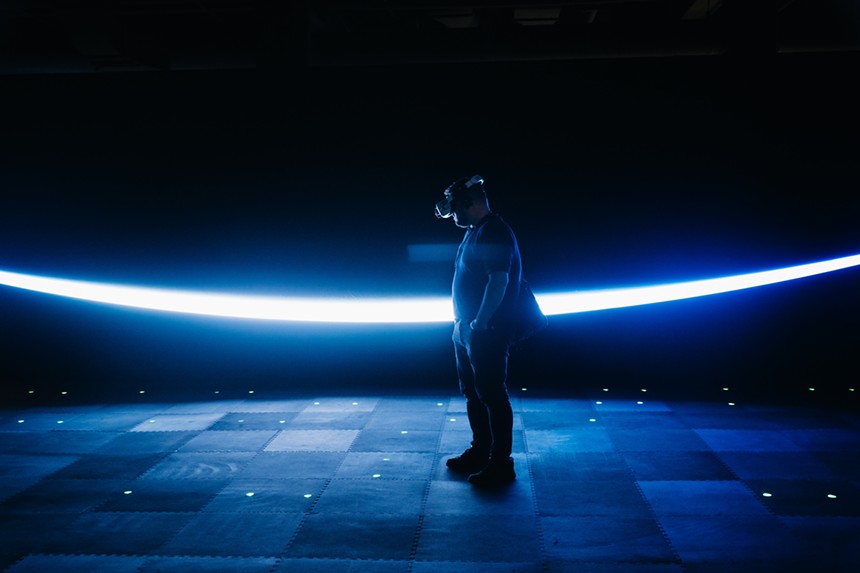
Off-Center has defined immersive as an unexpected theatrical experience that places the audience at the center of the story unexpectedly," says Charlie Miller.
Courtesy of THE INFINITE
Courtney Ozaki, founder and creative producer of the Japanese Arts Network (JA-NE) and creative producer at Off-Center, argues that immersive should provide an "embodied experience" where the audience is a part of the story, physically and emotionally. But she notes that defining immersive can be "divisive," and she doesn't want to gate-keep the art form.
David Thomas, co-founder of Immersive Denver, a community advocacy group, takes a broader view. "Immersive is the traditional fine arts funneled through the play aesthetic rather than the beauty aesthetic," Thomas says. "What's the play aesthetic? It's established on a certain level of ambiguity that must be resolved through meaning-making by the audience. That's why I have no issue saying Immersive Van Gogh or those selfie places are immersive, even if they maybe aren't as thoughtful with the immersion as other creators."
While the term itself is relatively new, immersive experiences have been around for centuries. Hanzon gave a presentation at the 2022 Denver Immersive Gathering, hosted by Immersive Denver, that traced the genre's origins through a fascinating timeline, pointing to immersive elements in Renaissance art, opera and even cathedrals, then citing more modern inspirations such as secret societies between 1850 and 1930, movie palaces in the 1920s and 1930s, Disneyland in 1955, Casa Bonita in 1974, Burning Man in 1985, raves in the 1990s, Meow Wolf in 2008 and Oclusu Rift in 2016.
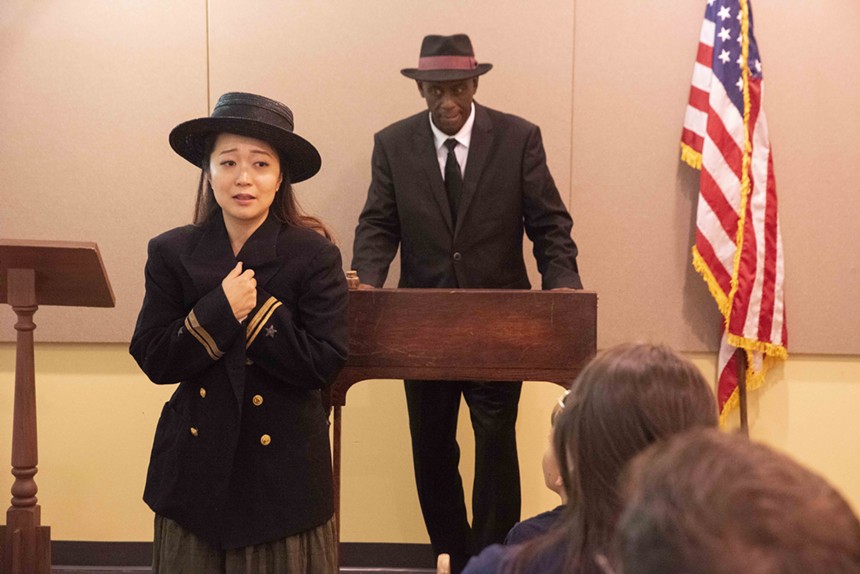
Ater the End, an immersive production staged at Anythink Library in Thornton produced by The Catamounts.
Courtesy of Michael Ensminger Photography
In Denver, a major turning point for immersive theater came in 2016, when Off-Center produced Sweet and Lucky. This large-scale, site-specific work, developed in collaboration with New York's Third Rail Projects, immersed audiences in a series of dreamlike environments within a 16,000-square-foot converted warehouse on Brighton Boulevard, where they became participants in a story set inside an antique shop.
"When Charlie brought Sweet and Lucky here, people saw the potential of immersive, and that experience inspired many immersive creators, including myself, to realize that potential," Ozaki says. "Before that, unless you'd gone somewhere else, like New York City, you wouldn't have had the opportunity to experience immersive in that way."
An estimated 6,000 people attended Sweet and Lucky during its extended run, and the production became a model for immersive experiences in the city, influencing creators like Berg Wilson and Patrick Mueller of Control Group Productions. Since then, immersive theater has expanded in Colorado, with companies such as Audacious Theatre, Control Group, Elevate Immersive, OddKnock Productions and the Catamounts continuing to push boundaries.
"The immersive art community in Denver has blown up at a much faster rate than the theater community has," says Ren Manley, Audacious Theatre's founding director. "My theory is that you have a lot of stoners who like to get high and walk through things, as well as Denver being a very activity-driven city. There's a lot of cities that you go to and most of the people are at home. People in Denver want to do things. Also, because we do not have an established arts scene like Broadway in New York or the film industry in Los Angeles, there is still room for experimentation. And having someone like Lonnie here as a vortex is part of it, as is the DCPA and Meow Wolf's strong decision to invest in immersive."
DCPA's Off-Center and Meow Wolf are the undisputed leaders of the local immersive scene. Since its inception in 2010, Off-Center has welcomed over 593,000 people to 67 productions and 15,040 performances, resulting in a surge of new theater-goers. In fact, Off-Center patrons now make up more than a quarter of all new DCPA ticket buyers. The immersive programming has also been successful in reaching younger audiences, with the average Off-Center audience member 46 years old — compared to the average age of 50 on Broadway and 53 for DCPA’s traditional theater programming.
On the other side of the equation, Meow Wolf's 90,000-square-foot narrative art exhibition, Convergence Station, opened in 2021 — five years after the flagship House of Eternal Return opened in Santa Fe — and is based on the concept of quantum travel. What started as a ragtag art collective now also has facilities in Dallas and Las Vegas, with locations opening soon in Houston and Los Angeles.
"We've centered [immersion] in all our exhibits so far," says Alex Bennett, Meow Wolf’s senior vice president. "A lot of it is story-based, with unique narratives that complement the physical art. The Meow Wolf universe continues to expand alongside our exhibitions, which are very brick-and-mortar-based. When we opened in Santa Fe in 2016, it was very much a collective effort with a story involved, creating something unprecedented. As we expand, those stories shape the underlying art. ... Our core principles will continue to evolve smartly. As we open new exhibits in Houston and L.A., you’ll see new technologies and storytelling methods that reflect this growth."
However, with expansion comes new challenges. Meow Wolf recently had to lay off 165 employees, many in Denver, and continues to negotiate with the Meow Wolf Workers Collective, its employee labor union.
"These adjustments are part of a broader strategy to streamline operations and allocate resources effectively," Bennett says. "As a young and growing company, some of these changes were necessary as we continue to learn our business and seasonality. These changes were not a result of poor performance, but rather a point of learning through our growth."
Off-Center has faced its own obstacles. The logistical and financial demands of producing large-scale immersive works have caused it to scale back its original programming. “I would love for us to do one every year, but it's just not feasible given our human and financial resources," Miller says. "But there's a lot of demand for this work in Denver, and we want to be more than a once-every-other-year opportunity for people to do cool things. So our strategy and model going forward is going to be to produce our own work every other year or thereabouts, and in between, to bring in the coolest stuff we can find from around the world.”
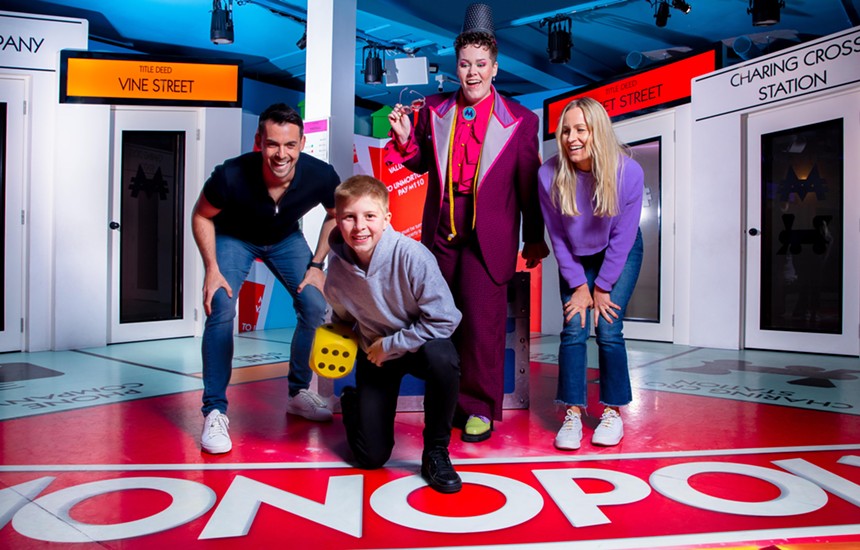
After years at temporary venues, Off-Center is moving to 407 South Broadway for two years, starting with Monopoly Lifesized.
Courtesy of Monopoly Lifesized
"I can’t say where yet, but I can confirm we will be taking that immersive experience to another domestic market," Hanzon says. "We hope to bring it back to Denver again, but one thing we have discovered is that people do not repeat immersive experiences, so they have a limited shelf life. ... We loved doing Camp Christmas for many years in Denver, but it's very demanding creatively to keep rebuilding. While we had a small number of loyal fans, most people would only do it once."
This move is part of Off-Center's new strategy to help jump-start immersive programming in cities where it has not yet taken hold, and to develop a financial model that makes producing original immersive works more viable.
"These projects are so big, complicated and expensive to make that it's a shame for them to be one and done in each city," Miller says. "Denver and most cities across the country don't have the tourism like New York to be able to sit something down and run it for forever. So we're experimenting with a new business model that allows for large-scale work to be created while also being able to pick up and move to other cities, eventually recouping the initial cost of building the thing."
Locally, the biggest challenge for Off-Center — and many smaller immersive companies — remains finding space for Denver productions. “It is very difficult and expensive to stand up a new building for one project and then vacate and start over again," Miller admits. After years at Stanley Marketplace and other temporary venues, Off-Center is moving to 407 South Broadway for two years, starting with Monopoly Lifesized, while continuing to search for a permanent home.
“Money and space are the two big things holding back more immersive work in the city, and space is directly connected to money," Manley says. "I can't fault Meow Wolf for figuring out a way of creating a financially viable art system. For us at Audacious, it's a good thing that we’ve always been very portable, because it's not getting any easier to find a space."
For smaller, independent immersive companies, space constraints and limited budgets mean that many ideas never make it past the concept phase. Berg Wilson of The Catamounts notes that her company overcomes these obstacles by producing shows outdoors in site-specific locations, but admits that this is not an option for all creators.
As immersive theater continues to grow in Denver, both established leaders and emerging voices are looking to the future with hope — but also a dose of realism.
"I think we're in a very transitional place with immersive," Thomas says. "There was a ton of excitement, and some of that panned out and some of it washed out. The bankruptcy of Immersive Van Gogh [hosted in Denver by Lighthouse Immersive] didn't help anybody. It just scares big money, but then Netflix opens the Netflix House, which keeps people thinking and excited. Locally, immersive needs to start to develop ways of recruiting young people to create. We forgot that when we started doing this, we were the young people who knew nothing and were making things up as we went along. Now that there is a little more maturity, we must remember that there are people on the other end and figure out how to bring them in. I'm optimistic, but I think there's a ton of work to do."
Despite challenges like rising costs and audience education, immersive theater is finding its place in Denver’s broader arts ecosystem. With support from institutions like the DCPA, grassroots organizations like Immersive Denver, and entrepreneurial creators like Berg Wilson and Manley, immersive theater will remain a vital and evolving part of the area's cultural landscape. Whether it’s a thriving business or a trendy gimmick depends largely on how the city’s creators and audiences continue to define — and redefine — what immersive truly means.
"We're not going back," Hanzon says. "Immersive is here to stay, and I want everyone who works in this realm to succeed. Without being pious about it, a lot of the immersive work really does inadvertently teach people how to be better audience members and better citizens. I haven't met an immersive creator yet who wasn't sort of a frustrated community leader. Immersive is about going beyond entertainment that placates or arouses audiences; it’s medicine for the soul, and it's not going anywhere."

